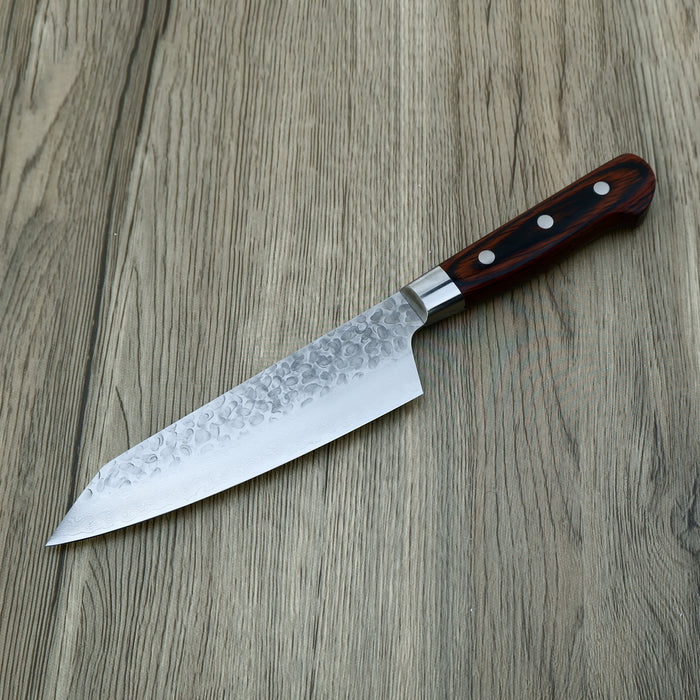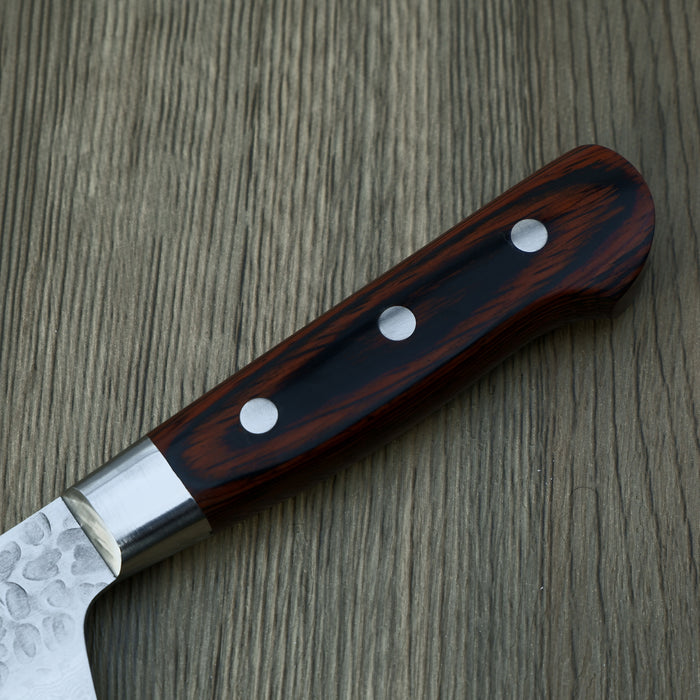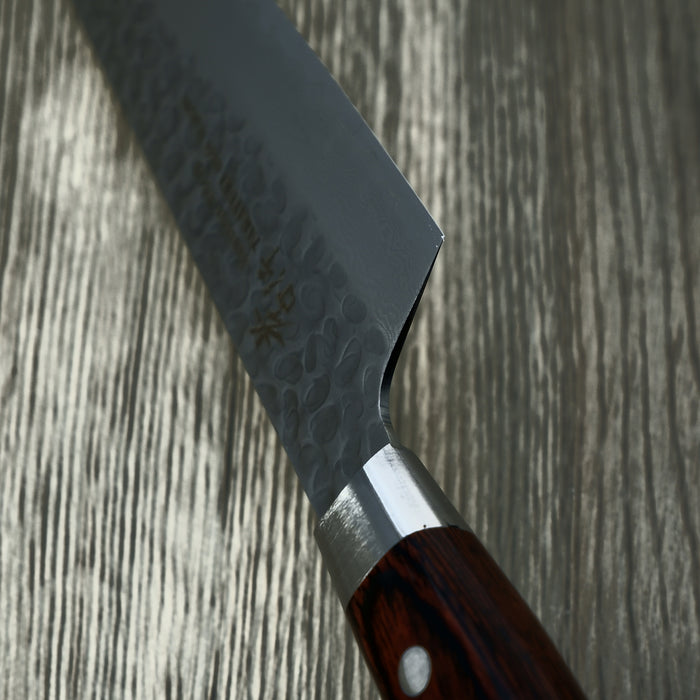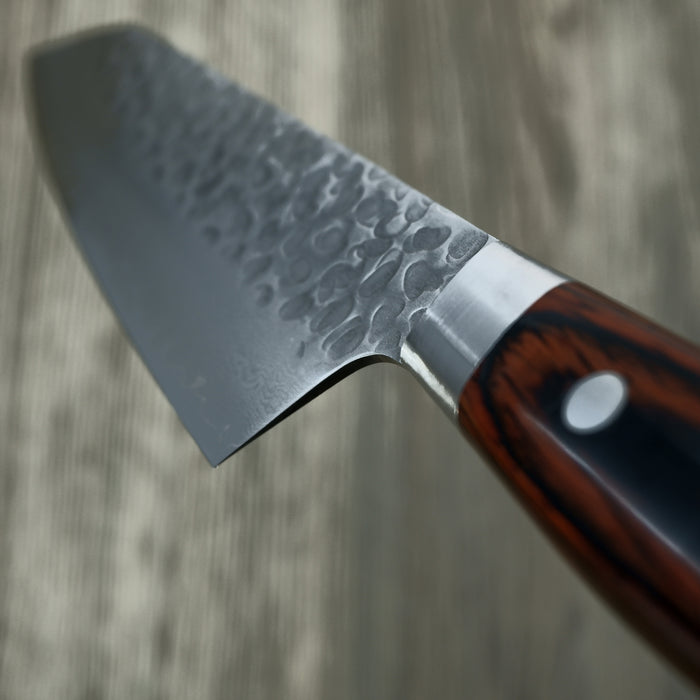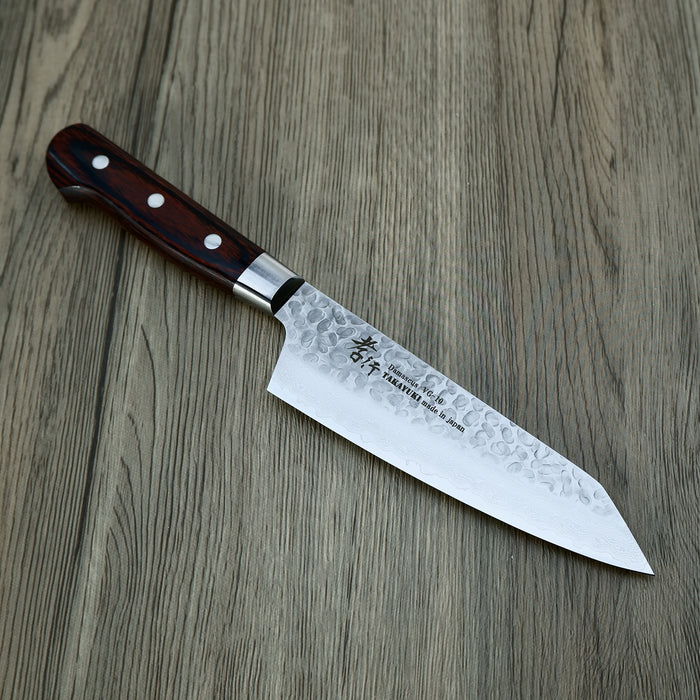
Sakai Takayuki 33 layer VG-10 Damascus Kengata Santoku 160mm
|
Total Knife Length: |
300mm / 11.8 inch |
|
Blade Length Tip to Heel: |
160mm / 6.3 Inch |
|
Blade Height: |
44mm / 1.7 inch |
|
Blade Width at spine: |
1.8mm / .071 inch |
|
Total Weight: |
166 grams / 5.9 ounces |
|
Steel Type: |
VG-10 Damascus / Stainless clad |
|
Rockwell Hardness: |
60-62 |
|
Handle Materials: |
Mahogany / Stainless ferrule |
The 33 layer knives from Sakai Takayuki offer the perfect balance of performance beauty and price. With great edge retention from the VG-10 steel, durable western style mahogany handles and a beautiful Damascus pattern these knives are hard to beat for the price.
*The Santoku Bocho (meaning "three Virtues" or "Three uses") is like the lesser known brother to the Santoku. similar in many ways but with a few differences. The Bunka Features a "K-tip" blade design. This creates a much sharper point capable of more fine tip work then its brother the santoku. Some would argue the Bunka is more versatile than the santoku because of its tip. Use the more acute tip to easily brunoise small shallots or slip it under silverskin on a tenderloin. Like the Santoku it has great versatility and an ability to tackle a wide range of tasks. They typically range in size from 130mm to 200mm and have a flat edge with little to no belly. Bunkas and Santokus are very popular among home cooks due to their versatility and to them having a slightly smaller size than a gyuto. Because a home cook tends to have a smaller space available to them and is prepping less quantity than in a professional the smaller size of a Bunka or Santoku makes them an excellent choice for a general purpose knife for a home cook. The smaller size also makes for a great "line knife" for a professional chef or cook when space is limited during service.*
Knife Care Tips
-
Never use this knife to cut through frozen foods, bones or other hard items.
-
After use be sure to wash using warm water, dish soap and a soft non-abrasive cloth or sponge.
-
Dry knife immediately after washing to avoid corrosion.
-
If storing for an extended period of time use a knife oil like the one found here https://thekniferoll.com/collections/sharpening-accessories/products/tsubaki-knife-oil
-
For edge maintenance and sharpening use whetstones, strops, or a fine ceramic honing rod. Avoid oil stones, diamond stones and steel rods
-
Some high carbon knives will need to be wiped dry periodically during use if cutting highly acidic foods to avoid corrosion.

